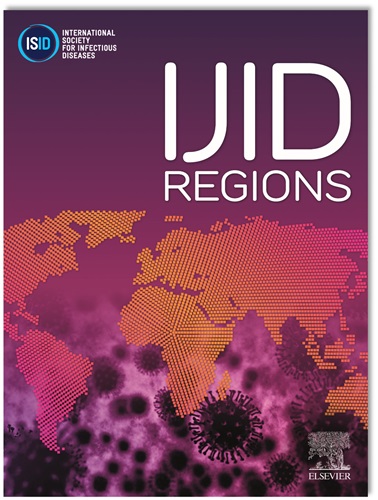The enhancing role of pharmacovigilance to conventional antibiotic resistance surveillance: cross-sectional identification and analysis of reports of antibiotic resistance in VigiBase
IF 4.8
2区 医学
Q1 INFECTIOUS DISEASES
引用次数: 0
Abstract
Objectives
This study aimed to identify and analyze potential cases of antibiotic resistance in a global pharmacovigilance database.
Methods
A search of VigiBase, the World Health Organization global database of adverse event reports, was done on data up to October 3, 2022 to identify suspected cases of antibiotic resistance. Reports were classified as being “probable” or “possible” to represent cases of antibiotic resistance.
Results
In total, 24,312 reports of potential antibiotic resistance cases were identified during the search, with 3497 classified as probable reports and 20,815 as possible reports based on their preferred terms. For the probable reports, 91.5% were found to be “very likely” or “likely” related to antibiotic resistance, although the reporting of antimicrobial susceptibility testing (38.3% of reviewed “probable” reports and 7.2% of reviewed “possible” reports) and previous antibiotic use (12.8% of reviewed “probable” reports and 9.0% of reviewed “possible” reports) was limited. The “possible” reports identified cases of antibiotic resistance with less accuracy but highlighted important information around unexpected antibiotic failure.
Conclusions
This study provides an in-depth overview of antibiotic resistance reporting in VigiBase. Certain terms identified cases with good accuracy and can contain supplementary information to conventional antibiotic resistance surveillance. These findings can guide future research; however, researchers must be aware of inherent limitations and biases.
增强药物警戒对常规抗生素耐药性监测的作用:VigiBase中抗生素耐药性报告的横断面鉴定和分析。
目的:在全球药物警戒数据库中识别和分析潜在的抗生素耐药病例。方法:检索截至2022年10月3日的世卫组织全球不良事件报告数据库VigiBase,以确定疑似抗生素耐药病例。报告被分类为“可能”或“可能”,以代表抗生素耐药性病例。结果:在搜索过程中,总共发现了24312例潜在抗生素耐药病例报告,其中3497例根据首选术语被分类为“可能”报告,20815例被分类为“可能”报告。在“可能”报告中,91.5%被发现“非常可能”或“可能”与抗生素耐药性有关,尽管抗菌药物敏感性试验(38.3%的“可能”报告和7.2%的“可能”报告)和既往抗生素使用(12.8%的“可能”报告和9.0%的“可能”报告)的报告有限。“可能”报告确定的抗生素耐药性病例准确性较低,但强调了有关意外抗生素失效的重要信息。结论:本研究提供了VigiBase中抗生素耐药性报告的深入概述。某些术语可以很准确地确定病例,并可包含常规抗生素耐药性监测的补充信息。这些发现可以指导未来的研究;然而,研究人员必须意识到固有的局限性和偏见。
本文章由计算机程序翻译,如有差异,请以英文原文为准。
求助全文
约1分钟内获得全文
求助全文
来源期刊
CiteScore
18.90
自引率
2.40%
发文量
1020
审稿时长
30 days
期刊介绍:
International Journal of Infectious Diseases (IJID)
Publisher: International Society for Infectious Diseases
Publication Frequency: Monthly
Type: Peer-reviewed, Open Access
Scope:
Publishes original clinical and laboratory-based research.
Reports clinical trials, reviews, and some case reports.
Focuses on epidemiology, clinical diagnosis, treatment, and control of infectious diseases.
Emphasizes diseases common in under-resourced countries.

 求助内容:
求助内容: 应助结果提醒方式:
应助结果提醒方式:


